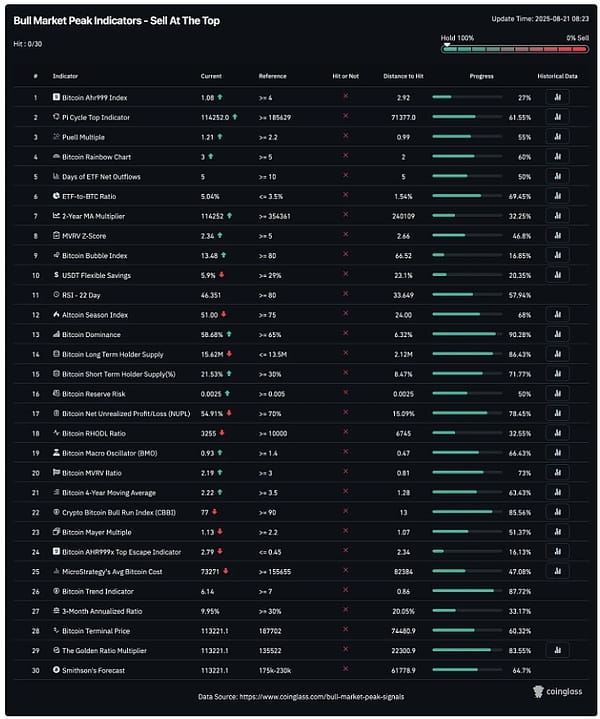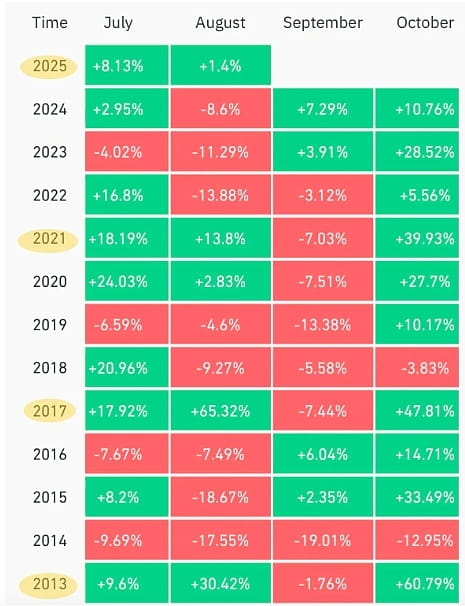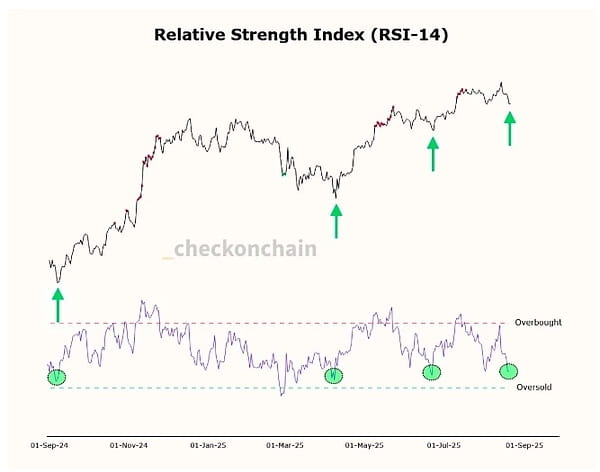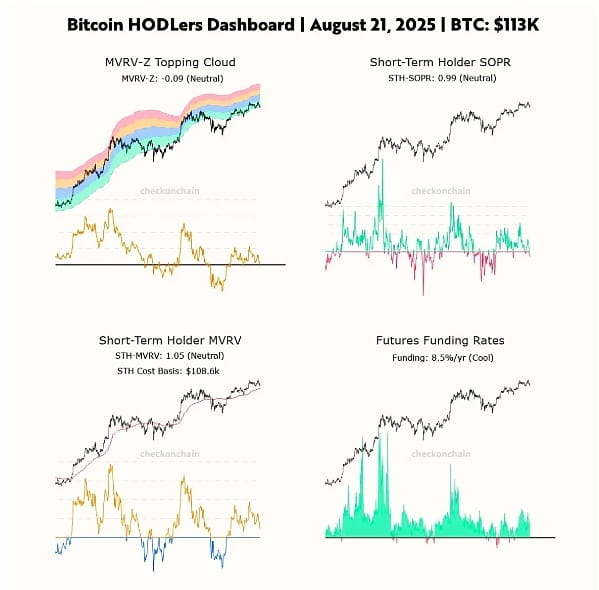Author: Anthony Pompliano, Founder and CEO of Professional Capital Management; Translated by Golden Finance.
The attention of capital allocators is as fleeting as that of ants, and now they seem to also suffer from short-term amnesia. In recent days, Bitcoin has pulled back from its historical high of $124,000, sparking debate about whether the Bitcoin cycle has ended.
Bitcoin has risen 20% so far this year, or nearly doubled from last year; does that matter? Of course, it doesn't matter. The media and market commentators are busy injecting fear and uncertainty into the market. They wonder whether the pullback signals the end of this cycle. They say the hype around Bitcoin may be unfounded. Perhaps the bears' views on Bitcoin are correct, and this digital currency can never deliver on its promises.
It's all noise.
The data is shocking—Bitcoin's bull market is not over.
1. Bitcoin Bull Market Peak Indicators
Let's start with CoinGlass's 30 Bitcoin bull market peak indicators. We have not yet touched any of them. None of the 30 indicators have reached their peak.

If we have not yet reached any market peak indicators, it is hard for the bull market to end.
2. August-September Effect
We also know that during bull markets, Bitcoin often cools down at the end of August and throughout September.
Investor Yannick Maurer wrote: "In the bull markets of 2013, 2017, and 2021, July, August, September, and October were respectively green, green, red, and green. This year is likely to follow the same pattern. We may see a pullback in September, followed by a final rise of 20-30% in October and early November."

3. RSI Index
If you only focus on short-term trends, analyst Frank Fetter points out that according to the Relative Strength Index, Bitcoin currently appears to be oversold.

Thus, the recent price drop is likely part of the normal fluctuations of the Bitcoin bull market. In the past, we often experienced multiple 30% drop-offs during a bull market, but now we generally only see one or two significant drops. Instead, we still see price declines of 5-15%, which is healthy. These dips help clear leverage and prepare for the next round of increases.
4. Four other indicators show a neutral to cooling trend.
You can clearly see this reset in the dashboard created by Frank Fetter. All four indicators show a neutral to cooling trend, meaning the market is still in good shape and prices will continue to rise in the coming months.

5. Long-term Bitcoin holders are very confident.
Chris Kuiper from Fidelity provided an astonishing statistic. He wrote: "After the 2024 halving, the Bitcoin ecosystem will undergo a significant transformation: the growth rate of BTC held for over 10 years (historical supply) will surpass the rate of new mining for the first time. An average of 566 BTC is entering long-term holding status daily, while only 450 new BTC are added each day. This indicates that these long-term holders are very confident."
These on-chain analyses, combined with broader market trends, demonstrate that Bitcoin is maturing. We are now reaching a certain market capitalization and level of market recognition, where every market participant can prudently allocate funds to Bitcoin.
Over time, this will reduce volatility.
So, no matter what you hear from friends, family, or the media, I don't believe the Bitcoin bull market is over. It seems we are witnessing a seasonal cooling of Bitcoin before a final rise in the bull market. October and November should be bustling, but in the meantime, we have to endure some short-term fluctuations. For an asset with a compound annual growth rate of over 85% over 10 years, this cost is trivial.

